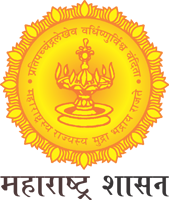The Corporation is a Nodal agency for implementing the Development of Handicrafts in the State. The Corporation for the development of various handicrafts. The Corporation implements the following schemes for the development of handicrafts in the State.
- Organising training for Handicrafts/Handloom artisans for traditional Handicrafts, new designs of traditional & other Handicrafts, and other training as per the demand/requirement of the Artisans.
- Organising exhibitions for sale and promotion of the Handicrafts in the State.
- Participating in the various exhibitions organized by the State, other States, and abroad for the promotion of Handicrafts.
Registration
The Handicraft Artisans willing to participate in the training and exhibitions are required to register themselves with the Corporation with a nominal fee of Rs.200+ 18% GST. The registration certificate issued is valid for a period of three years from the date of issuance. The registration form is available on the following link:-
The Artisans registered with the Corporation are eligible to participate in training programs and exhibitions. The Artisan having valid registration under the said scheme will only be eligible for participation in training/exhibition through the Corporation.
Selection criteria
The applications are invited for training and participation in the exhibition through MSSIDC from the artisans through advertisement in the Newspaper. The artisans fulfilling the eligibility criteria mentioned in the application are selected for training and participation in exhibition through MSSIDC.
Paithani Center, Paithan
The Government of Maharashtra in 1973 handed over the Paithani Training & Production Center at Paithan, District Chatrapati Sambhaji Nagar, Maharashtra to the MSSIDC to preserve the languishing art of paithani saree weaving. The Center has 204 handlooms for weaving paithani sarees and center also provides livelihood to 50 women weavers. The said Center also imparted training of Paithani Saree Weaving to more than 1100 artisans since 1986.
About Paithani Saree
Paithani- A poem in Silk & GoldPaithan is a small taluka place in district Chatrapati Sambhaji Nagar, Maharashtra, nestled on the banks of river Godavari. Paithan, in the past, was known as Pratishthan, ruled by the legendary Shalivanhanas, and was a famous international trade center for silk & sari. The Paithani saree is a reminder of this glorious past, preserved by the weavers of Paithan for over 2000 years.
The Paithani of Maharashtra is not just a silk saree but stands for a culture, given more to thrift than flamboyance and treasured for its elegance and beauty. The original Paithani saree was nine yeards of pure silk and spun gold, called the "Navvari Paithani’, crafted with painstaking craftsmanship and labour. No Maharashtrian wedding trousseau is complete without the Paithani saree and shela. These are treasured heirlooms which are passed down the generations.
Literature, both classical and folk, testifles to the existence of Paithani silk even before the Mughal age, though the last munificent patrons were the Peshwa rulers. The men wear Paithani Stole over their dhoti and kurta, while the women wear the resplendent Paithani sarees at weddings, festivals and religious ceremonies, Niloufer, daughter-in-law of the late Niam of Hyderabad was a great patron of the Paithani.
The Paithani has a special dhoop chaav(light and shade) effect that is achieved by weaving two different coloured silk threads together, it has an ornamental zari border and pallav, and buttis(little designs) like tara (stat), mor (peacock), popat (parot), Kuyri (mango), rul phool (flower) paisa (coin), pankha(fan), kalas pakli(petal), kamal (lotus), chandrakor(moon), narli(coconut) and so on. The designs are also influenced by the beautiful paintings of Ajanta. The traditional colours of vegetables dyes include neeligunji (blue), pasila (red and green) gujri (black and white), mirani (black and red), motiya(pink), kusumbi (purplish red) and pophali(yellow).
In the olden days, the zari was drawn from pure gold, it has a subtle and classic grandeur sans garishness. Silver is the affordable substitute today. The zari comes from Surat, the resham (silk) from Surat and Bangalore. The sari takes anywhere from three months to a year to weave, depending on the intricacy of the pattern. The finer work is very demanding, requiring immense skill and concentration. In such-cases, the weaver can work at the loom for only 3-4 hours per day, to ensure quality.
As with most of the traditional arts and crafts of India, the Paithani too suffered a decline under the British Raj. MSSIDC has revived and kept the craft of Paithani alive since 1973.
At MSSIDC, we believe that the Paithani is not only a part of our heritage and culture but an enduring emotion.
Emporia
Handicraft is a cultural treasure of any society. It also provides livelihood to rural artisans. Therefore, it needs to be preserved, protected, nurtured and developed, both as a cultural heritage and as a source of employment to artisans.
MSSIDC provides sales outlets to Handicraft Artisans to sell their Handicrafts under the brand name “MARHATI” from its ‘Marhati Maharashtra Emporium’ which is conveniently located at -
- World Trade Centre, Cuff Parade, Mumbai
- 8/A State Emporia Complex, Connaught Place, New Delhi
- Marhati Paithani Centre, Paithan, District Chhatrapati Sambhaji Nagar.
The artisans can sell their products through the Emporia where they can either hire their own sales counter or Artisan can provide handicraft items for selling on a consignment basis.



